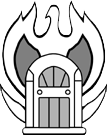More actions
In modern theatre and musical performances the sounds created on stage are reinforced by gathering the original sounds, mixing them, and then sending them to loud speakers with amplification.
Some simple physics
Sound is vibrations in air. Sound is produced by vibrating air. Sound is heard when the vibrations strike our eardrums and are converted into signals that are processed by our brain.
Sources of sound
The Human Voice
The human voice creates sound by vibrating the larynx with air from the lungs. On the way out of the mouth the sound is shaped by the lips, tongue, and teeth to create words.
Traditional Musical Instruments
Sound vibrations can also be made by traditional musical instruments, usually by
- Striking things (percussion instruments)
- Dragging one item past another item (string instruments)
- Blowing air through constricted spaces (wind instruments)
Please note that many Foley effects are made in the same manner as the traditional musical instruments (striking, dragging, and blowing) but are not called "musical" because they usually cannot be tuned.
Electronic Musical Instruments
Electronic musical instruments don't create sound directly. Instead they create electronic signals that are interpreted as sound by additional audio components.
Conversion into electronic signals
The human voice and traditional musical instruments have their vibrations received and converted into electric signals by microphones. Sound conversion is one of the earliest applications of electronics. The conversion of sound into electricity is conceptually simple: a sound has two dimensions: frequency and amplitude. In music these dimensions are called pitch and volume. A microphone converts the sound wave into an electrical wave that matches the sound frequency to the cycle frequency of the electrical wave and the sound volume to the height of the electrical wave. When sound is played on speakers the electrical wave is converted back into sound by vibrarting an artificial diaphragm in the speaker much like a human vibrate his larynx.
Along the way the electric sound signals are carried by audio cables. They can be modified electronically by "signal processors" and made louder by amplifiers. The most commons signal processor is a mixer which takes multiple input signals and creates a unified sound from them. One or more channels of audio are produced. If one channel of audio is produced it is called monaural sound. Two channels (a left and right) is called stereo. More than two channels are usually presented to the listeners as some sort of surround sound playback.
Audio cables
Audio cables (also just called "wires") come in two broad categories: analog and digital, which carry analog and digital signals. The analog signals are discussed above. They are the direct translation of pitch and volume into the frequency and amplitude of an electrical wave. Digital signals are converted from analog signals by | analog to digital (A-to-D) converters - by a process that is also called "sampling."
A cable connector is the termination element at each end of the cable. There are many kinds of connectors and each kind is comes in two sexes: male and female. Male connectors have one or more prongs that are inserted into a corresponding female connector. The female connectors have one or more holes that receive the male connector's prong(s). It is left as an exercise for the reader to explain how these connectors came to be labeled "male" and "female."
